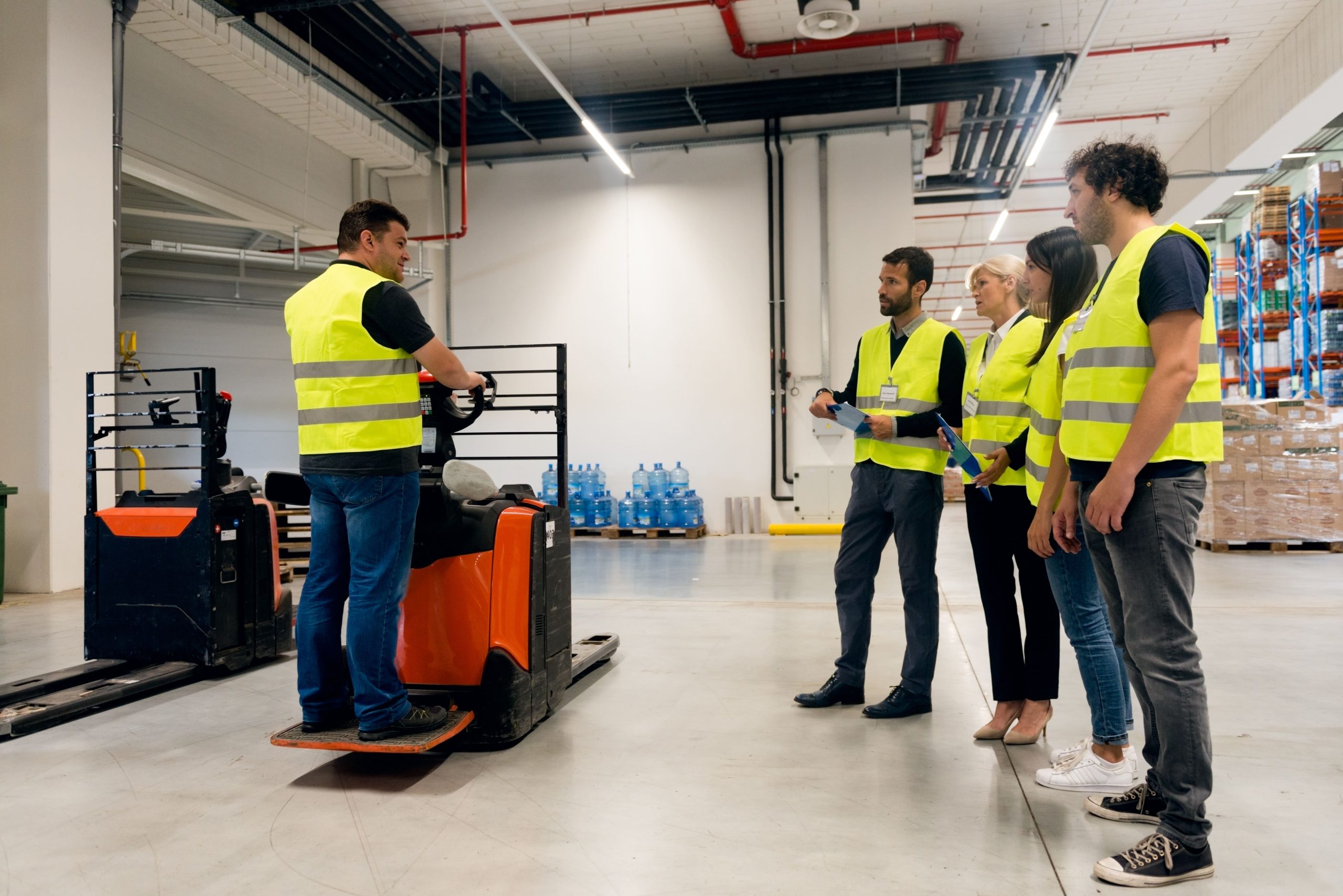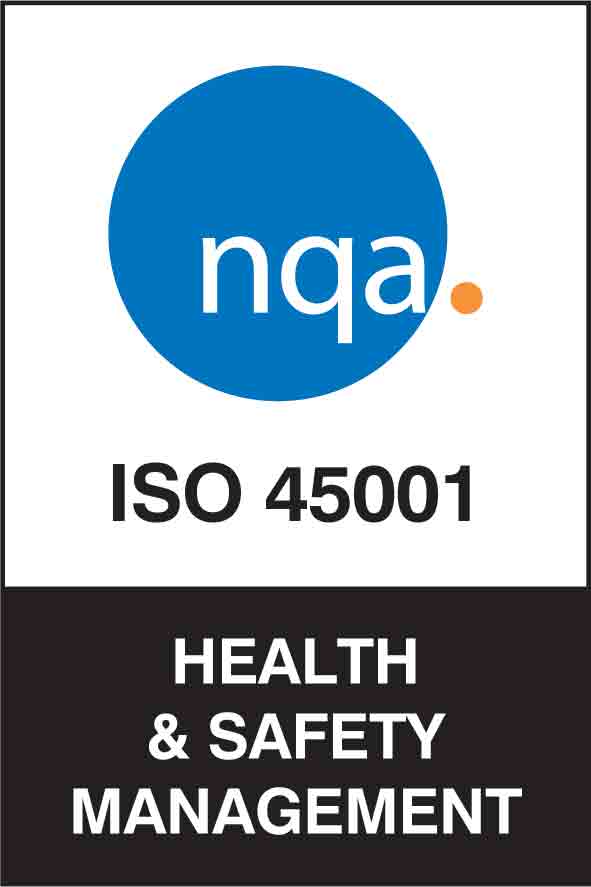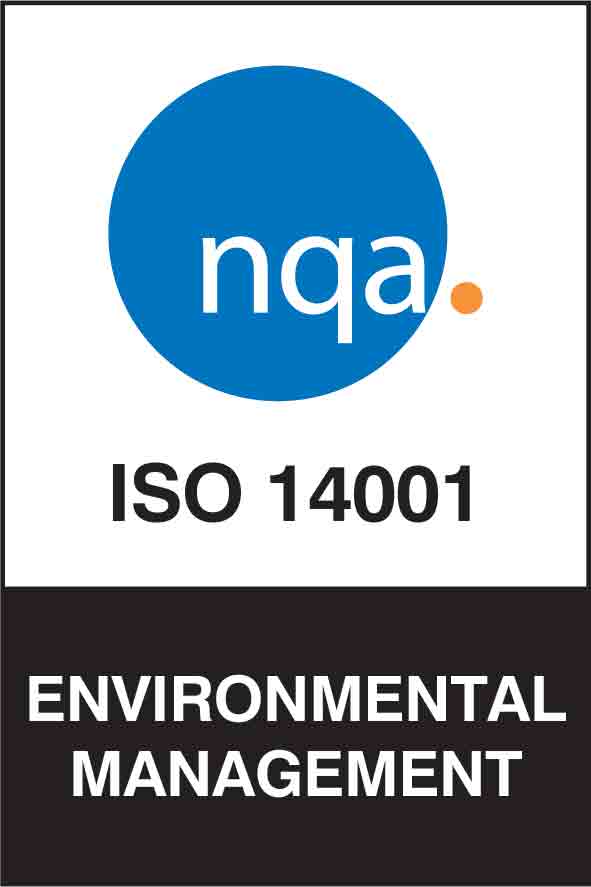BLOG
6 common health and safety training mistakes | Top tips for getting it right
Written by Scott Crichton on 24 June 2022

Training has long been established as an important safety management practice. As well as contributing towards more competent, motivated and committed employees, companies that invest in regular health and safety training are likely to experience fewer work-related injuries, saving your organisation valuable time and money.
In fact, while research on the long-term impact of training interventions is scarce, one IOSH study found that health and safety training significantly improved companies’ safety culture and productivity, and reduced workplace accidents by 22%.
This might seem like common sense; after all, many accidents involve an element of human error and training helps to avoid knowledge-based mistakes. While no amount of safety training can remove all risk entirely (indeed, the hierarchy of controls tell us that administrative controls aren’t a replacement for eliminating the hazard, substituting the hazard or using engineering controls), ensuring employees understand the job at hand, and the safest way to do it, will certainly help to reduce the risk.
Though often viewed as a ‘nice to have’, health and safety law requires employers to provide whatever information, instruction and training is needed to ensure, so far as is reasonably practicable, the health and safety of employees. In this way, while training is primarily about prevention, it could help also employers to avoid prosecution and strengthen your claims defensibility should an incident occur.
Having delivered training for over a decade in many different settings, I understand the impact that it can have. However, I also know that organisations don’t always get training right or utilise it to its full potential.
Here are six of the biggest mistakes businesses make when devising and delivering health and safety training.
1. Not thinking about your actual training needs
Organisations often roll out the same training courses year after year without taking the time to truly consider their training needs. This can result in employees taking courses that aren’t relevant to their role, wasting time covering the same ground, or, worse, not completing courses that are needed to do their job safely and support the organisation’s overall goals.
A training needs analysis (TNA) is a good place to start, as this will help to ensure training is targeted, relevant and impactful. In essence, a TNA is a systematic process that helps to determine the training required at various levels of an organisation. It works by identifying what knowledge and skills are required for a safe workplace, assessing people’s existing knowledge and skill level, and from this determining the training gap.
TNAs should be carried out at three levels:
- The organisational level – what are the focus areas for training based on the organisation’s short and long-term goals?
- The job level – what skills, knowledge and behaviours are needed to do each job/task/process safely? (Training should be linked to key responsibilities, activities and tasks identified in risk assessments).
- The individual level – who in the organisation needs training and in which particular area? Some may need a general awareness of a topic, while others with specific responsibilities (such as Fire Marshalls) may need more in-depth training.
Our smart e-Learning solution, LearningNest, offers adaptive courses which provide learners with a pre-assessment to gauge their current understanding and knowledge gaps. From there, courses are then automatically tailored to their individual learning needs.
Training can be an expensive process, so conducting a TNA will help you to keep costs down by determining whether or not a need for training actually exists, who needs it, and whether the intervention will (directly or indirectly) contribute to the achievement of organisational goals.
Do you need support?
Speak to us for an honest, no obligation chat on:
0345 226 8393 Lines are open 9am – 5pm
2. Not training everyone who needs to be trained
It’s not just employees who need training.
Contractors, for example, are usually hired with the expectation that they don’t need training at all. However, they might not be familiar with the risks from your activities and the controls you have in place. As such, the HSE recommends considering with them what instruction and training they might need to work safely.
Then there’s transient and less visible workers too, such as agency/temporary workers and homeworkers, who are often overlooked. Don’t forget that health and safety law – including the requirement to provide training – extends to these individuals too.
Importantly, those at the top – including business owners, senior management and those on the board – should also receive training, as they will be held legally liable if things go wrong. Courses specifically aimed at senior individuals – including our IOSH Safety for Executives and Directors course – will help to ensure they understand their responsibilities and liabilities and have the knowledge and skills to discharge their duties confidently, as well as demonstrate your commitment to employee wellbeing.

3. Dull, outdated and unimpactful delivery methods
The way training is delivered is almost as important as the content itself. Unfortunately, health and safety is one of those topics that people tend to bemoan, and that means that organisations need to find creative ways of driving home the message to stop people from switching off.
Instead of death by PowerPoint, consider:
- Mock trials, which bring to life the consequences of a health and safety incident in the workplace and how similar situations can be avoided.
- Bringing in guest speakers. Hearing from external experts can inspire, break up groupthink, and offer insider knowledge and a fresh perspective.
- Getting people up and doing. Encourage interaction and participation through workshops, games, quizzes, ‘myth busters’ exercises, and discussions and debates.
- Sharing success stories and highlighting occasions where accidents have been prevented through good practice.
- e-Learning. Training doesn’t have to be done face to face; e-Learning is not only a cost-effective and efficient solution but uses interactive elements for a more impactful learning experience and better knowledge retention.
Of course, it’s important to keep people’s preferences and learning styles in mind. Some may prefer fun and interactivity; others may appreciate a more serious approach. Some may learn best by doing; others may be more visual learners. Try to use a variety of training methods, adapt them for individuals’ needs, and listen to feedback.
Don’t forget to consider disabled employees and people whose first language isn’t English and, in all cases, make sure information is easy to understand.
4. Not recording training
Often, training is undertaken but not recorded, which can make it harder for organisations and managers to keep track of who’s completed what courses and identify future training needs.
Keeping records of employees’ health and safety training will:
- Help you to approach training more strategically and keep costs down;
- Make it easier to tie training into your organisation’s performance so that you can measure the return on investment; and
- Enable you to demonstrate to a regulator that it has been undertaken, which could be crucial when it comes to winning contracts, ensuring a successful inspection or in the aftermath of a health and safety incident.
5. Not keeping training up to date
Training isn’t a ‘one and done’ exercise, though many organisations fall into this trap. Often when I ask employers whether they have provided training, they will say yes, though when pressed it transpires that this was half a decade ago at the employee’s induction.
Naturally, regulation and best practice evolves, workplace risks change, and knowledge fades over time, and this can leave room for accidents. Training should therefore be reviewed regularly to make sure you and your team are up to date with the latest health and safety requirements.
The frequency at which training needs to be refreshed will depend on a number of factors, but as a general rule, employers should assess knowledge and competence on an annual basis. It doesn’t always have to be a complete re-hash of the same information either; refresher training may suffice.
While you may want to develop a schedule setting out the frequency at which certain training will be revisited, don’t let this stop you from acting sooner if you notice that inefficiencies or unsafe practices are creeping in.
When re-training, make sure to keep content fresh and introduce new resources so that people get real value instead of going through the motions.
6. Not explaining the value to employees
Fundamentally, training will never have the impact you desire if people don’t understand the point of it. Health and safety training is a crucial part of proactive health and safety management and can quite literally save lives, but the reality is many employees see it as a burden – an unwanted distraction that takes time away from their day jobs.
In fact, according to a recent survey, 46% of employees who do receive training (of any kind) aren’t convinced of its effectiveness.
Unless people truly understand the value of health and safety training, organisations will face an uphill battle, and any positive benefits in terms of accident reduction, efficiencies and motivation will be greatly compromised.
Indeed, I’ve heard people say, “I’ve done this job for years, I shouldn’t have to be back in a classroom!” Yet we expect airline pilots, the military and even footballers to be trained regularly – workplace health and safety training is no different. It’s about challenging these perceptions and driving home the importance.
To reframe how employees view health and safety training:
- Make sure training focuses not just on the what, but the why. Health and safety training shouldn’t just be about rule setting, it should be about educating people on why those rules exist.
- Don’t overwhelm people with unnecessary information; studies suggest employees only utilise 5-20% of what they are taught in training courses, so stick to the essentials and keep it relevant.
- Don’t present compliance training as being about ‘getting it done’, as this gives the wrong impression. Focus instead on the value it might have to a worker.
- Keep track of workers’ behaviour once they have completed the training (not just that they have completed it). This will help to quash perceptions that training is just ‘done for the sake of it’.

Related Content
Safety training and support
WorkNest helps to protect organisations and keep them compliant through a combination of engaging training and expert support.
Our fixed-fee Health & Safety service gives you access to a named consultant who will advise and assist your business with all health and safety matters, plus all the tools you need to reduce risk on a daily basis, including our market-leading e-Learning platform, LearningNest.
And if you’d prefer person-to-person training, our experienced safety trainers can also deliver a range of IOSH-accredited and topic-based courses to boost confidence, competence and awareness across all levels of your organisation.
For more information and to discuss your specific needs, get in touch with our team on 0345 226 8393 or request your free consultation using the button below.









